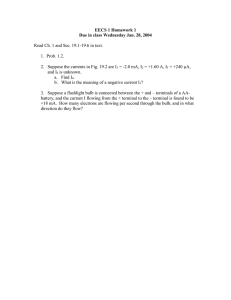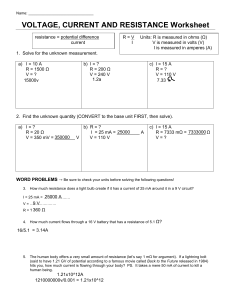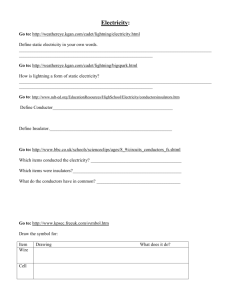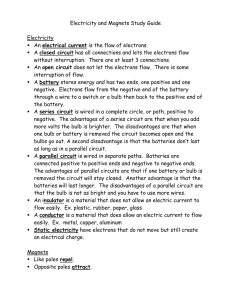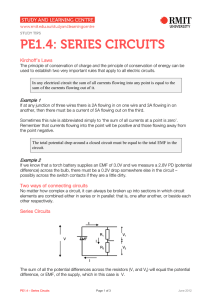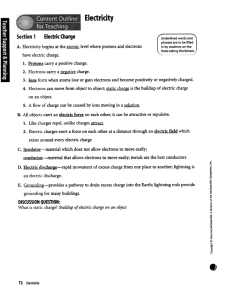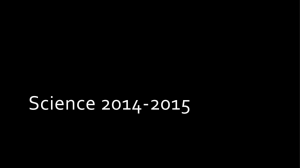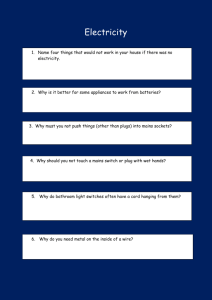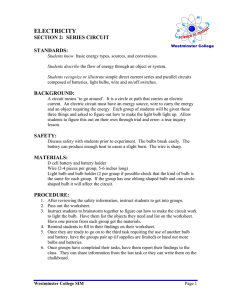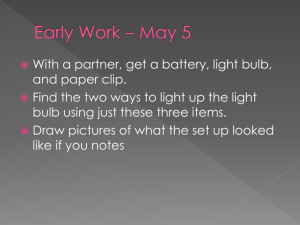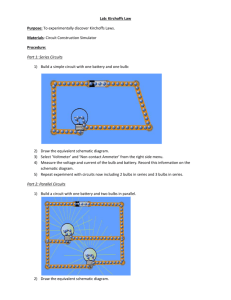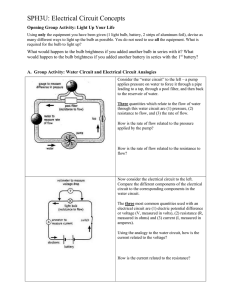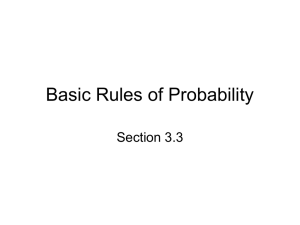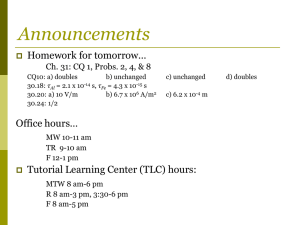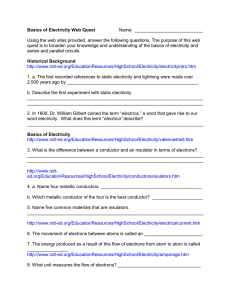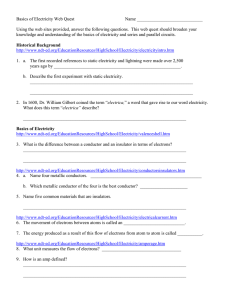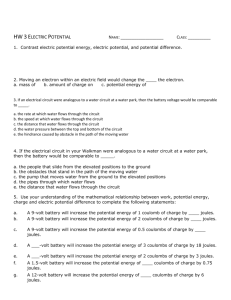Title of Unit: Energy Author(s): Julia Heyen Lesson Plan 18 STATE
advertisement
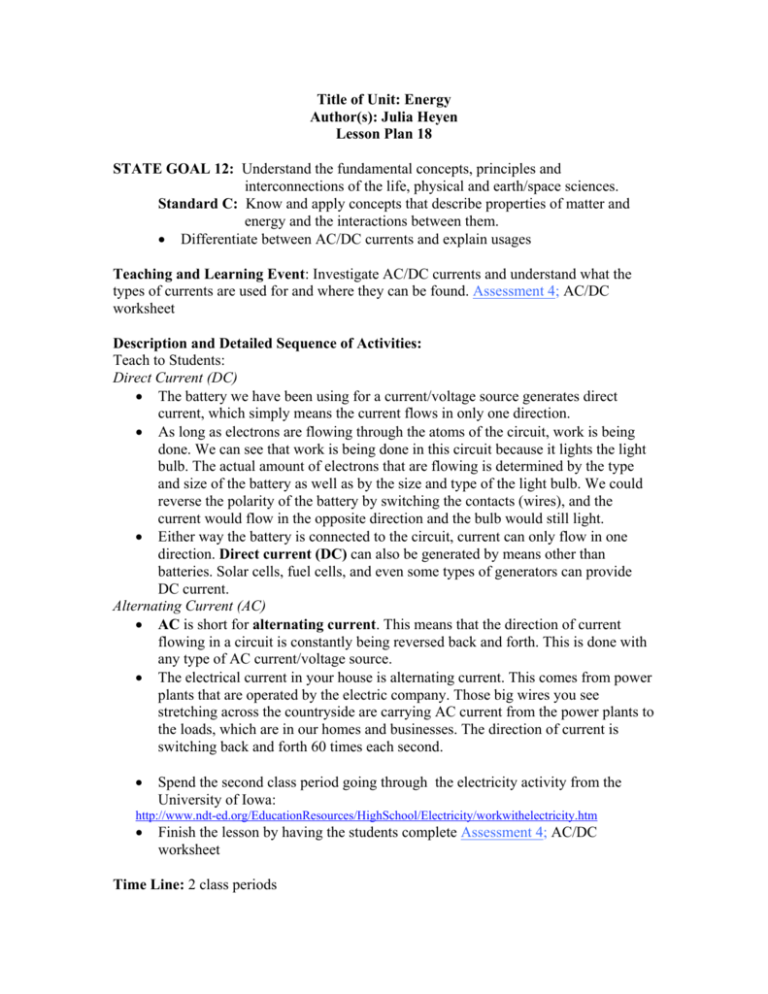
Title of Unit: Energy Author(s): Julia Heyen Lesson Plan 18 STATE GOAL 12: Understand the fundamental concepts, principles and interconnections of the life, physical and earth/space sciences. Standard C: Know and apply concepts that describe properties of matter and energy and the interactions between them. • Differentiate between AC/DC currents and explain usages Teaching and Learning Event: Investigate AC/DC currents and understand what the types of currents are used for and where they can be found. Assessment 4; AC/DC worksheet Description and Detailed Sequence of Activities: Teach to Students: Direct Current (DC) • The battery we have been using for a current/voltage source generates direct current, which simply means the current flows in only one direction. • As long as electrons are flowing through the atoms of the circuit, work is being done. We can see that work is being done in this circuit because it lights the light bulb. The actual amount of electrons that are flowing is determined by the type and size of the battery as well as by the size and type of the light bulb. We could reverse the polarity of the battery by switching the contacts (wires), and the current would flow in the opposite direction and the bulb would still light. • Either way the battery is connected to the circuit, current can only flow in one direction. Direct current (DC) can also be generated by means other than batteries. Solar cells, fuel cells, and even some types of generators can provide DC current. Alternating Current (AC) • AC is short for alternating current. This means that the direction of current flowing in a circuit is constantly being reversed back and forth. This is done with any type of AC current/voltage source. • The electrical current in your house is alternating current. This comes from power plants that are operated by the electric company. Those big wires you see stretching across the countryside are carrying AC current from the power plants to the loads, which are in our homes and businesses. The direction of current is switching back and forth 60 times each second. • Spend the second class period going through the electricity activity from the University of Iowa: http://www.ndt-ed.org/EducationResources/HighSchool/Electricity/workwithelectricity.htm • Finish the lesson by having the students complete Assessment 4; AC/DC worksheet Time Line: 2 class periods Books: Equipment Name: Materials: Assessment 4; AC/DC worksheet Resources - Web Sites: http://www.ndt-ed.org/EducationResources/HighSchool/Electricity/hs_elec_index.htm Resources – Software: TRADEBOOKS ARE INTRODUCED AT THE BEGINNING OF THE UNIT. THESE BOOKS ARE AVAILABLE AND ACCESSIBLE TO STUDENTS THROUGHOUT THE UNIT.

